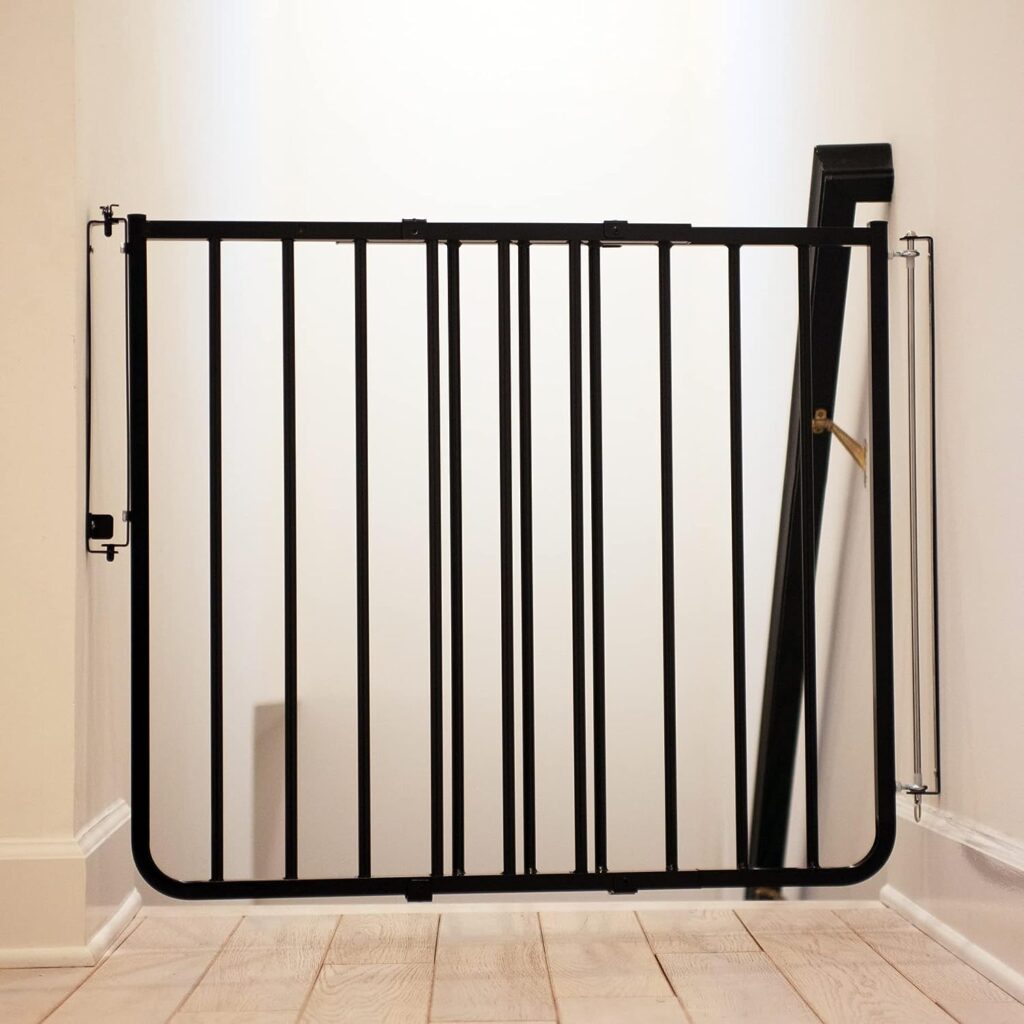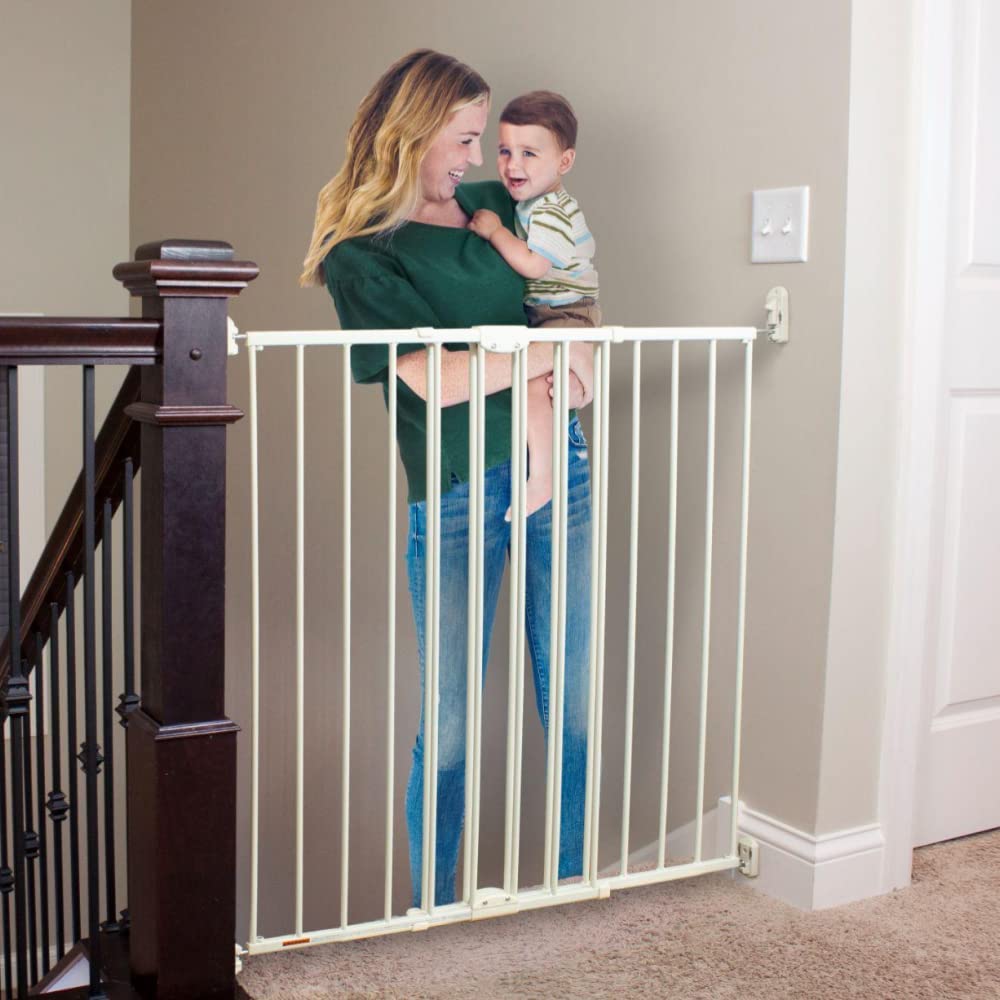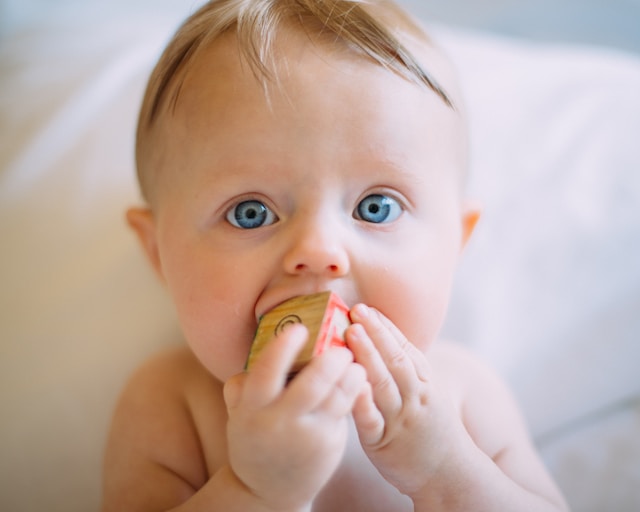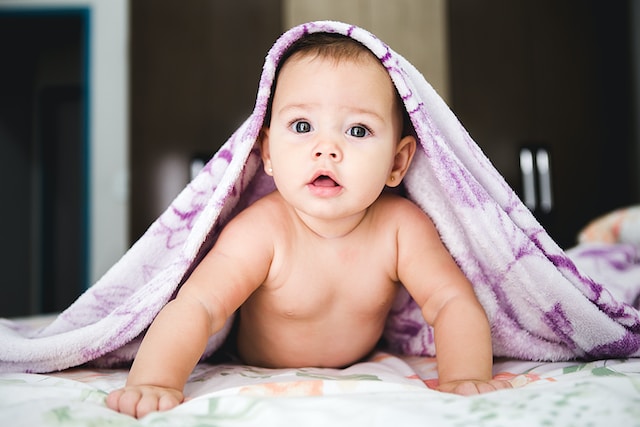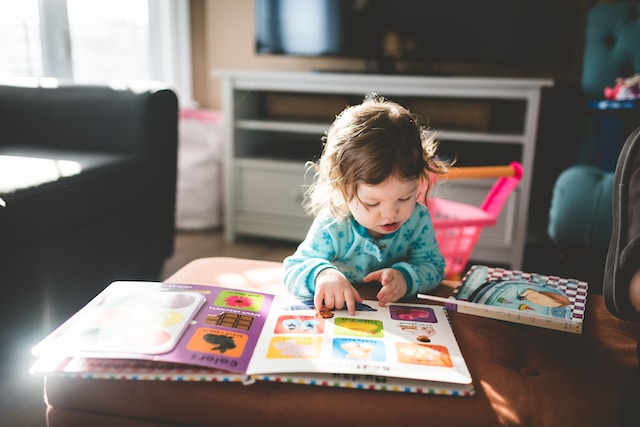Every new parent’s goal is to keep their baby safe.
We spend a lot of time in the kitchen preparing meals, washing dishes, putting groceries away, etc., so our baby will likely be with us some of the time.
The kitchen presents so many hidden dangers, so parents need to recognize and respond proactively to prevent injuries before they happen.
In this article, we will cover the basics of baby-proofing your kitchen, safety gadgets you may find helpful, and cover some hazards you may not have thought of, so read on to make your kitchen as safe as possible for your little guy or gal!
Why is Childproofing Your Kitchen Important?
A kitchen is traditionally a place full of good food, time with family, fond memories, and a lot of fun. However, it is also full of many dangerous objects, especially for babies or young children.
Children are naturally curious and like to explore. If we, as parents, don’t take the measures to baby-proof our kitchen, our child could be seriously injured, or worse. In the UK alone, more than 67,000 children are injured every year, with most of them being children under the age of four.
Of course, accidents can happen even when we take every safety precaution out there. Still, by taking the time to properly baby-proof the kitchen, we are creating the safest environment possible.
When Start to Baby Proof Your Kitchen
It is a good idea to baby-proof your kitchen before your child even arrives, yes that soon! I remember how tired and busy I was when my first child was born, and baby-proofing was the last thing on my mind.
As new parents, we are overwhelmed with caring for our new child. Combine that with lack of sleep and stress, and remembering to baby-proof our home may go by the wayside.
If you take the time to baby-proof your kitchen before your baby is here, you will get used to the idea of keeping it safe and know how to use the various locks and guards with plenty of time to spare before your child is ready to explore on their own.
Appliances
How to Baby Proof Stove and Oven
The oven and stove can present much danger to a baby or small child. It is hot, oven doors are heavy, children may crawl inside, and there could be potential gas leaks if you have a gas stove.
1. Always Keep an Eye on It
If you are using your oven or stove, do not leave your baby unattended in the kitchen. It only takes a few seconds for your child to get into trouble, which in some cases could be disastrous!
If your child is mobile, meaning they can scoot, roll, crawl or walk, it is best to keep them out of the kitchen when you are cooking.
If you must have them in the room, consider seating them in a highchair or putting a playpen in the corner so that they are safely secured.
2. Oven Lock
An oven lock is typically placed on your oven’s side or top that attaches to the door; the lock clips into place, preventing your child from opening the heavy oven door.
An oven guard or lock can prevent your baby from being injured by the heavy door or from opening an oven that is on and hot!
3. Stove Knob Covers
Stove knob covers go over the knobs or dials that turn on your burners. Usually, they are made of soft plastic, so you can squeeze them and apply pressure to turn on the stovetop top.
You can also remove the stove knobs and keep them in a basket or locked drawer out of your baby’s reach. They usually slide or click on and off. Without the knobs on, your child cannot accidentally turn on the stovetop.
4. Be Aware of Your Surroundings
Always know where your child is before you move something off the stove or open the oven door. I know a child whose mom thought he was happily playing in another room; when she opened the oven, he ran up behind her and placed his hand on the hot oven rack!
Children love to be underfoot, so make sure your child isn’t on the floor near you when you take something hot off the stove. You may accidentally spill on them or fall over them.
How to Baby Proof Cabinet and Drawers
Cabinets and drawers also have many hidden dangers for a baby. Cabinets usually store dangerous chemicals used for cleaning, and drawers might have sharp knives or other kitchen utensils. Baby’s can also pinch fingers in cabinets and drawers that are not secured.
There are many different types of cabinet locks out there, so do some research and see what might work best for you! Some are magnetic locks that require a special key, and others are tabs or buckles that need to be squeezed or depressed to open.
Properly baby-proofing your cabinets and doors can prevent unnecessary accidents!
1. Magnetic Locks
Magnetic locks work by attaching a lock inside the cabinet that automatically latches when closed. To open the lock, you need a special magnetic key. You can hang the key up high so only adults can reach it.
Magnet locks are a very secure method; just be sure you don’t lose the key, or you won’t be able to access your cabinets!
2. Velcro Tabs
Consider using heavy-duty velcro tabs designed for hanging objects to keep your cabinets closed. This is an especially great option if you are renting or don’t want to drill holes into your cabinets.
Keep in mind as your baby gets stronger, it may not be enough to keep them out, but if they learn early, they can’t open the cabinets they may stop trying.
3. Latch Locks
There are different types of latch locks. Some locks latch onto the outside of the cabinet and require a button to be depressed. Others latch inside the cabinet with a hook.
The benefit of the ones that latch inside the cabinet is that they are not visible, so it doesn’t disrupt your kitchen’s look. The style that latches outside usually sticks on with a heavy-duty adhesive which can be difficult to remove when you no longer need them.
4. Storage
If possible, do not keep anything dangerous in the cabinets your child can reach. Store cleaning chemicals and other dangerous solutions stored up high. Consider keeping cooking knives in a canister pushed back from the counter’s edge.
It’s a great idea to keep your pots and pans and child-safe dishes down low. Plus, children love to play with Tupperware and pots, so they provide a distraction for your child while you’re busy in the kitchen.
According to the U.S. Poison Control Center, children under six accounted for 43% or nearly a million of the calls received in 2019, with the peak ages being one and two-year-olds. Cleaning substances counted for over 10% of the overall calls.
How to Baby Proof Dishwasher
A dishwasher may not seem like a dangerous appliance, but consider a washer full of knives, forks, and glass dishes that can break. You definitely don’t want your baby getting their hands in there!
Here are some things to consider when you need to baby-proof your dishwasher.
1. Locks
You can purchase an appliance, lock the latches from the side to the door or see if your dishwasher has a lock built-in. Many newer appliances have a locking function built-in which unlocks with a preset code.
2. Avoid Sharp Objects
Consider keeping all the sharp utensils in another spot until you are ready to run the dishwasher. You may also wish to wash them by hand; that way, they are never within reach of your child.
3. Detergent
Not only is it essential to keep dishwasher detergent away from small children, especially the pods, which are colorful and look like candy, but do not load the detergent until it is time to run the dishwasher.
4. Cover the Buttons
If you have a child who loves buttons, consider putting something over those tempting buttons to stop them. Playing with the buttons may not be a safety hazard, but it can be rather frustrating if your little one constantly changes your settings!
How to Baby Proof Refrigerator and Freezers
Fridges and freezers hold many potential dangers for a small child or baby. There could be food that is a choking hazard or an allergy, and ice cubes can also present a dangerous choking hazard.
Fridges are heavy, but they can topple over with deadly results. Read further as we cover how to baby-proof your refrigerator and freezer.
1. Lock It
You may have noticed a trend by now in our baby-proofing advice, but child safety locks are essential in keeping your kitchen safe. They made attachable latches for fridge doors, or newer models may have a lock open that you unlock with a code.
In addition to foods that may cause choking or that your child might be allergic to, there are many messy items in your fridge you do not want your baby to get into. Finger painting is great, but not when it’s done with ketchup and mustard!
A lock is critical if you have a chest-style freezer in your home. Children have tragically been known to crawl inside and freeze to death.
2. Ice Cube Dispenser
You will also want to lock your ice cube dispenser if you have one. Ice cubes present a dangerous choking hazard to small children. Most freezers that have a dispenser on the outside have an electronic way to lock it.
3. Secure it to the Wall
We often hear about securing televisions, bookshelves, and dressers to the wall, but it is also a good idea to secure your fridge to the wall. While it may seem unlikely, if your child is climbing the shelves, it can topple forward and crush your child.
How to Baby Proof Kitchen Table
Kitchen tables and other items in the dining room may cause your child injury. A crack on the head by a heavy object or hitting a sharp corner might mean a concussion or a hospital trip for stitches.Follow our simple baby-proofing steps below to reduce the risk of injury from your kitchen table.
1. Avoid Table Runners
Table runners may look nice, but they present a hazard to your little one, especially if you keep heavy objects on your table like a vase, decorative bowl, or candlesticks.
Children can pull the table runner and, along with it, anything resting on top, which could result in a nasty head injury.
2. Corner Guards
Sharp table corners can cause gashes in little heads. It doesn’t take much force either for a nasty cut to happen; a simple trip and fall may be all that’s needed for your child to need stitches.
Sharp corners can also injure eyes and mouths, so placing corner guards is a great idea. They are usually made of soft plastic or foam and slip right over the corner of your table.
3. Chair Locks
Heavy dining room chairs can topple over and injure your baby. Babies who are learning how to walk grab onto everything, so locking your chairs in place could prevent an unwanted injury.
You can purchase cords that attach your chairs to the table or cords that latch all the chairs together. In a pinch, use a bungee cord to attach chairs to prevent them from toppling over.
Small Appliances
There are some small appliances in your kitchen you will want to keep out of your baby’s reach to prevent injuries from happening. Things like your coffee maker, blender, toaster, and microwave could be potential dangers if not attended to during the baby-proofing process.
1. Coffee Maker
As parents, most of us love and need coffee to keep up with our little one’s energy, but coffee pots get HOT and can cause scalding or burning. The best way to prevent injuries with your coffee maker is to set it far back on the counter, out of reach of your child.
Turn off the coffee pot when you are finished so it can cool down.
You should never drink a hot beverage while holding your baby as it is possible to spill the hot liquid on them and create a burn. I once burned myself with hot tea, and my leg needed medical attention!
If you have a coffee grinder, keep that out of reach from your child as well as it has sharp blades, and unplug it after every use.
2. Microwaves & Toaster Ovens
These appliances are heavy, and your child could pull them down if they are too close to the edge of the counter. If possible, mount your microwave above your oven or on another part of the wall.
Unplug toaster ovens when you are finished so your child cannot accidentally turn them on, making them hot and dangerous.
3. Toaster
The toaster could also give your child a nasty bump on the head if they pull it off the counter. It is essential to keep all cords out of your child’s reach. They provide a method to pull objects down and could also be a strangulation risk.
Unplug your toaster when not in use; that way, if your child accidentally gets their hands on it, they would be accidentally burned or receive an electric shock should they decide to stick something inside!
4. Blenders, Food Processors, etc.
Anything that has sharp blades like a bender or a food processor should be stored well out of your child’s reach. Little hands love to explore, and they could receive a dangerous cut by sticking their hands inside one of these appliances.
As with other appliances, if they are stored on the counter, push them as far back as possible and keep cords away.
Dining Area
As discussed with the kitchen table, your dining area poses potential risks for your child. In addition to putting guards on your table corners, securing your chairs, and avoiding table runners, here are some other tips to baby-proof your dining area.
1. No candles
Avoid burning candles when your child is awake and mobile as they could be a fire or burn hazard. Save the candles for the romantic dinners when grandma is babysitting, and it is just you and your partner!
2. Cabinet Locks
If you have a buffet or other furniture with cabinets in your dining area, you may need to put locks on them to keep your baby safe.
I know I use my buffet cabinets as a catch-all, so there may be hidden dangers in there you may have forgotten about!
3. Anchor Furniture
Again, if you have a large piece of furniture in your dining, you will want to anchor it to the wall. Children love to climb, and children can pull even heavy pieces over if the weight distribution is “just right.”
4. Outlet Covers
It is likely your dining area will have outlets lower to the ground that your child may be able to reach. Cover any unused outlets with a protective cover to keep little fingers and objects out.
Some switchplates have a sliding cover over the outlet input that you can use to prevent hands from touching.
If there are items plugged into the outlets, ensure that all cords are out of reach of your child to prevent them from pulling something down or strangling themselves on the cord.
Some Do’s and Don’ts
Do
- Get a trashcan with a lock on the lid or store it in a cabinet with a lock.
- Keep plastic bags and other suffocation hazards out of your child’s reach.
- If you have kitchen blinds, wrap the cords up high to prevent strangulation, or consider getting cordless blinds.
- Keep windows and doors locked. If you have a screen door in your kitchen, make sure there is a way to lock it so your child can’t wander outside.
- Put a protective guard over your garbage disposal so your child can’t accidentally turn it on.
- Put outlet covers over any exposed outlets in your baby’s reach.
Don’t
- Do not leave your child unattended in the kitchen. EVER.
- Do not store hazardous or dangerous materials where children can reach them.
- Don’t forget to check your locks from time to time for wear and tear and ensure they function correctly.
- Avoid keeping mobile infants and children in the kitchen while cooking.
Final Words
Keeping your kitchen and dining area safe for your child may seem like a lot of work, but taking the time to properly baby-proof the spaces can save you a lot of headaches and possibly heartaches later.
Remember, it is a good idea to do your baby-proofing before your little bundle of joy arrives, but if the task seems too large or the cost is an issue, start with the most pressing issues first.
When baby-proofing any room, always start at the bottom of the room and work your way up. Get down on a child’s level to see what might be tempting or exciting to touch and explore.
Taking the time to baby-proof your kitchen and to provide a safe environment for your child is a new parent must and can seem daunting. Consider the information in this article and the tips included as your “go-to guide” for getting your kitchen and dining area safe for your baby!

